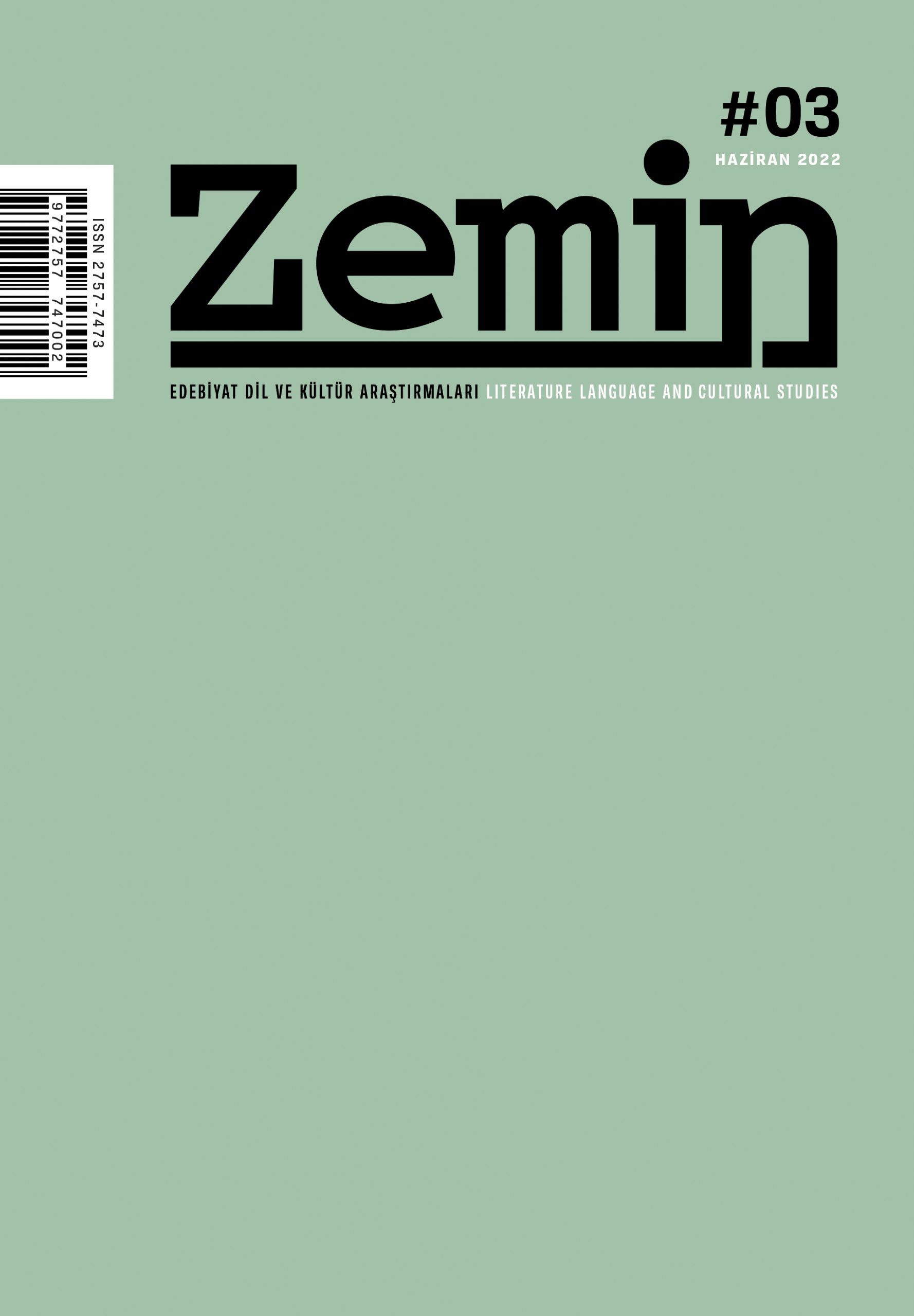The “Ân” in Beauty as a Decisive Element in the Manifestation of Love
DOI:
https://doi.org/10.5281/zenodo.8019965Keywords:
The gem of love, an/charm, love, lover, beloved, darling, Ottoman literatureAbstract
The “beloved,” around which many clichés were formed, and her/his qualifications occupy a very important place in Ottoman literature. Many words used to describe the beloved have gained versatile and deep meanings over the centuries, surpassing their known counterparts. The word “ân,” which is related to the emotional bond between the lover and the beloved, in almost all dictionaries, emphasizes the inexplicable aspect of the beloved as “something that is difficult to describe, understandable but inexpressible, something that can be felt rather than defined, known with the pleasure of observing, a conscientious meaning.” This state, which is difficult to express even today, is met with abstract words such as “charm,” “vibe,” and “energy.” This word, which is related to the spiritual bond between people as well as the attraction that causes the emergence of love, is positive in almost all the poems that could be identified, since attraction can be corporeal or spiritual, as well as sensual or negative. For this reason, the emphasis on positivity is important and is decisive in determining the direction of the meaning of “attraction.” Understanding the “charm/ân,” which has deep meanings and dimensions, is important in making sense of “beauty” as well as poems. This article focuses on the dimensions of meaning by referring to which meanings are used by Persian and Ottoman poets, first by looking at the equivalents of the word in the dictionaries, and then by examining the adventure of attaining meanings.
References
Aslan, Üzeyir. “Klasik Türk Şiirinde Şâhid.” Dil ve Edebiyat Araştırmaları Dergisi. s. 1 (Kış: 2010): 1-28.
Bâkî. Bâkî Dîvânı. Hazırlayan Sebahattin Küçük. Ankara: TDK, 1994.
Çağbayır, Yaşar. Ötüken Türkçe Sözlük. İstanbul: Ötüken Neşriyat, 2007.
Dehhoda, Ali Ekber. Lügat-nâme-i Dehhoda. Tahran: Müessese-i Lügat-nâme-i Dehhoda, 1377 [1998].
Derzi-zâde Ulvî. Derzi-zâde Ulvî: Dîvân. Hazırlayan Büşra Çelik ve Muzaffer Kılıç. İstanbul: DBY Yayınları, 2018.
Emrî. Emrî Dîvânı. Hazırlayan M. A. Yekta Saraç, İstanbul: Eren, 2002.
Enverî, Hasan. Ferheng-i Bozorg-i Suhen. Tahran: İntişârât-ı Sohen, 1381 [2002].
Enverî, Hasan. Ümmî Divan Şairleri ve Enveri Divanı. Hazırlayan Cemal Kurnaz ve Mustafa Tatçı, Ankara: MEB, 2001.
Etik, Arif. Farsça Türkçe Lûgat. İstanbul: Salah Bilgi Kitabevi Yayınları, 1968.
Ferşâd-mehr, Nâhîd. Dîvân-ı Hâfız: Bâ Şerh-i Kâmil-i Ebyât, Tahran: İntişârât-ı Gencîne, 1388 [2009].
Hâfız-ı Şîrâzî. Dîvân-ı Hâfız. Hazırlayan Pervîz Nâtil Hânlerî. Tahran: İntişârât-ı Hârezmî, 1362 [1983].
Hâkânî-i Şirvânî. Dîvân-ı Hâkân-ı Şirvânî. Hazırlayan Alî Abdu’r-rasûlî. Tahran: Şirket-i Çâp-hâne-i Sa‘âdet, 1316 [1937].
Hamîdiyân, Saîd. Şerh-i Şevk, Tahran: İntişârât-ı Katre, 1395 [2016].
Hurremşâhî, Bahâü’d-din, Hâfız-nâme. Tahran: Şirket-i İntişârât-ı İlmî ve Ferhengî, 1380 [2001].
Hüseyin Remzi. Lügat-i Remzî. İstanbul: Matbaa-i Hüseyin Remzî, 1305 [1887].
İnjû, Mir Cemâle’d-din Hüseyin, Ferheng-i Cihângîrî. Meşhed: Çâp-hâne-i Dânişgâh-i Meşhed, 1351 [1972].
Konuk, Ahmed Avni. Mesnevî-i Şerîf Şerhi. İstanbul: Kitabevi, 2008.
Mecdî Mehmed Efendi. Dîvân. Medîne-i Münevvere Şeyh Arif Hikmet Kütüphanesi 82/811, vr. 46b.
Mevlânâ Celâle’d-dîn-i Rûmî. Mesnevî-i Ma‘nevî; Celâle’d-dîn Muhammed bin Muhammed Mevlevî. Hazırlayan Reynold Alleyne Nicholson. Tahran: İntişârât-ı Hermes, 1390 [2011].
Muallim Nâcî. Lügat-i Nacî. İstanbul: Asır Matbaası 1322 [1904].
Muhyî-i Gülşenî. Balaybelen: İlk Yapma Dil Muhyî-i Gülşenî. Hazırlayan Mustafa Koç. İstanbul: Klasik Yayınları, 2011.
Musluoğlu, Ferhat. “Hayretî Divanı (Tenkitli Metin - Dil İçi Çeviri)” Doktora Tezi. Marmara Üniversitesi, 2021.
Mütercim Âsım Efendi. Burhân-ı Kâtı‘. Hazırlayan Mürsel Öztürk ve Derya Örs. Ankara: TDK, 2009.
Nâilî-i Kadîm. Dîvân. Hazırlayan Haluk İpekten. Ankara. Kültür Bakanlığı, 2019.
Necâtî Beg. Necatî Beg Dîvânı. Hazırlayan Ali Nihad Tarlan. İstanbul: MEB, 1963.
Nedîm. Nedîm Dîvânı. Hazırlayan Muhsin Macit. Ankara. Kültür Bakanlığı, 2017.
Nef‘î. Nef‘î Dîvânı. Hazırlayan Metin Akkuş. Ankara: Akçağ, 1993.
Ömer Faruk Harman. “Meryem.” TDVİA. c. 29. (Ankara: Türkiye Diyanet Vakfı, 2014).
Recâî, Ahmed Ali Buhârâyî. Ferheng-i Eş‘âr-ı Hâfız. Tahran: İntişârât-ı İlmî, 1375 [1996].
Sâmî, Şemseddin. Kâmûs-ı Türkî. İstanbul: İkdâm Matbaası, 1317 [1899].
Selîkî. On Altıncı Yüzyıl Şairi Selîkî ve Şiirleri. Hazırlayan Ömer Zülfe. Ankara. Kültür Bakanlığı, 2009.
Selmân-ı Sâvecî, Dîvân-ı Selmân-ı Sâvecî. Hazırlayan Ebu’l-kâsım Hâlet. Tahran: İntişârât-ı Mâ, 1371 [1992].
Steingass, Francis Joseph. A Comprehensive Persian-English Dictionary. Beirut: Librairie du Liban, 1975.
Seyf-i Fergânî. Dîvân-ı Seyf-i Fergânî. Hazırlayan Zebîhullâh Safâ. Tahran: İntişârât-ı Firdevsî, 1364 [1985].
Seyyid Mustafa Râsim Efendi. Tasavvuf Sözlüğü (Istılâhât-ı İnsân-ı Kâmil). Hazırlayan İhsan Kara. İstanbul: İnsan Yayınları, 2008.
Şeyhülislâm Es’ad Efendi. Şeyhülislâm Es’ad Efendi ve Divanının Tenkitli Metni. Hazırlayan Muhammet Nur Doğan. İstanbul: MEB, 1997.
Şu‘ûrî, Hasan Efendi. Lisânü’l-Acem: Ferheng-i Şu‘ûrî. Hazırlayan Ozan Yılmaz. İstanbul: YEK, 2019.
Tâcî-zâde Cafer Çelebi. Heves-nâme. Hazırlayan Necati Sungur. Ankara: TDK, 2006.
Tevfik, Ebuzziyâ. Lügat-i Ebuzziyâ. Kostantiniyye: Matbaa-i Ebuzziyâ, 1306 [1888].
Vusûlî. Dîvân. Hazırlayan Hakan Taş. Ankara: TDK, 2015.
Yahyâ Bey [Taşlıcalı]. Dîvân. Hazırlayan Mehmed Çavuşoğlu. İstanbul: İÜ Edebiyat Fakültesi, 1977.
Yahya Kemal Beyatlı. Kendi Gök Kubbemiz. İstanbul: Yahya Kemal Enstitüsü, 1974.
Yılmaz, Ayşe. “Mehmed Salâhî’nin Kâmûs-ı Osmânî’si ve Eserdeki Divan Şiiri Unsurları.” Doktora Tezi. Marmara Üniversitesi, 2018.
Downloads
Published
How to Cite
Issue
Section
License
Copyright (c) 2022 Muzaffer Kılıç

This work is licensed under a Creative Commons Attribution 4.0 International License.



